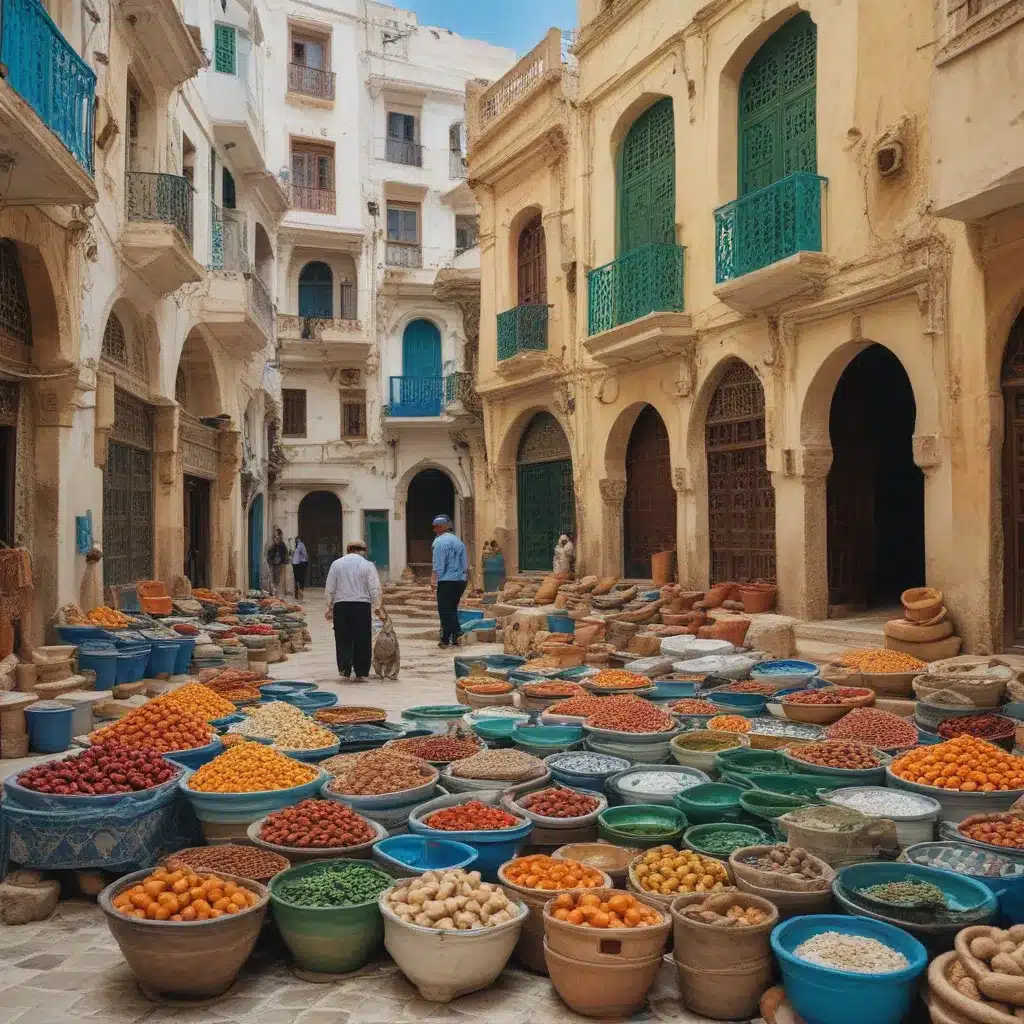
Weaving a Culinary Tapestry in the Heart of New York
As I step through the doors of El Bahia, the sights, sounds, and aromas of Tangier immediately transport me to the bustling streets of Northern Morocco. The warm, inviting atmosphere instantly puts me at ease, like being welcomed into the home of a dear friend.
The owner, Laila, greets me with a radiant smile and a steaming cup of mint tea, the quintessential ritual that has become synonymous with Moroccan hospitality. I take a sip, savoring the refreshing blend of fragrant leaves and the subtle sweetness that dances across my tongue. It’s a small moment that encapsulates the essence of what this restaurant aims to achieve – to offer New Yorkers a genuine taste of the vibrant culture and traditions of Tangier.
Uncovering the Flavors of Tangier
Tangier has long been a melting pot of cultures, a gateway where the Mediterranean and the Atlantic converge, and the culinary landscape reflects this rich tapestry. As I peruse the menu, I’m struck by the diverse array of dishes that celebrate the region’s unique heritage.
Tea in Tangier has long been a hub for exploring the nuances of Moroccan cuisine, and the team at El Bahia has taken inspiration from their wealth of knowledge. From the aromatic lamb tagine, slow-cooked to perfection, to the vibrant vegetable couscous bursting with the flavors of saffron and preserved lemons, each dish tells a story of the land and its people.
One signature offering that captivates my senses is the bastilla, a savory pastry that combines the richness of chicken or pigeon with the sweetness of eggs, almonds, and fragrant spices. It’s a testament to the harmonious blending of sweet and savory that is so characteristic of Northern Moroccan cuisine.
Exploring the Culinary Traditions of Tangier
As I savor each bite, I can’t help but wonder about the stories behind these tantalizing flavors. Laila, sensing my curiosity, graciously shares insights into the culinary heritage of Tangier, weaving a tapestry of history and tradition.
She explains that the region’s proximity to the sea has long influenced its culinary offerings, with an abundance of fresh seafood playing a central role. Tangier’s location at the northernmost tip of Africa has also made it a hub for the exchange of ideas and ingredients, as traders and travelers from across the Mediterranean have passed through over the centuries.
“The flavors of Tangier are a testament to the region’s role as a cultural crossroads,” Laila tells me, her eyes gleaming with pride. “Each dish is a reflection of the diverse influences that have shaped this vibrant city.”
Uncovering the Spice Trail
As I delve deeper into the menu, I’m struck by the complexity and depth of the spice blends that infuse each dish. Laila explains that the art of spice blending is a revered tradition in Tangier, with each family or restaurant having its own unique recipe passed down through generations.
“The key to our spice blends is the careful balance of flavors,” she says, motioning to the array of jars lining the shelves behind the counter. “We source the finest spices from the Atlas Mountains and beyond, combining them in a way that captures the essence of Northern Moroccan cuisine.”
I’m particularly intrigued by the use of ras el hanout, a complex blend of up to 30 different spices that is a hallmark of Moroccan cooking. Laila shares that the specific combination can vary, but it often includes aromatic ingredients like cardamom, cinnamon, and cloves, along with earthy notes of cumin and coriander.
Honoring the Culinary Traditions of Tangier
As I savor the layers of flavor in each dish, I’m struck by the dedication and attention to detail that goes into the preparation. Laila explains that the kitchen at El Bahia follows the time-honored techniques that have been passed down through generations in Tangier.
“We believe in honoring the traditions of our ancestors,” she says, “but we also strive to put our own modern twist on these beloved dishes.”
One such example is the use of a traditional clay tagine pot to slow-cook the meats and vegetables, locking in the flavors and ensuring a melt-in-your-mouth texture. The couscous, too, is prepared with the utmost care, using a specialized steamer to achieve the light, fluffy texture that is a hallmark of the Northern Moroccan style.
Harira soup, a staple in Tangier, is another dish that showcases the restaurant’s commitment to authenticity. The rich, fragrant broth is simmered for hours, with a blend of lentils, chickpeas, and aromatic spices that fill the air with the scents of home.
Experiencing the Vibrant Culture of Tangier
As I savor the final bites of my meal, I’m struck by the way the flavors and atmosphere of El Bahia have transported me to the bustling streets of Tangier. The vibrant textiles, the intricate tilework, and the soothing sounds of Moroccan music create an immersive experience that goes beyond just the food.
Laila explains that this attention to detail is a reflection of the restaurant’s commitment to celebrating the rich cultural heritage of Tangier. “We want our guests to feel as if they’ve been transported to the heart of Northern Morocco,” she says, her eyes sparkling with enthusiasm.
Indeed, as I linger over my mint tea, I can’t help but feel a sense of wonder and appreciation for the culinary traditions that have been so meticulously preserved and brought to life in this corner of New York City. El Bahia is not just a restaurant – it’s a window into the captivating world of Tangier, a place where the flavors of the past and the present converge to create a truly tantalizing experience.


